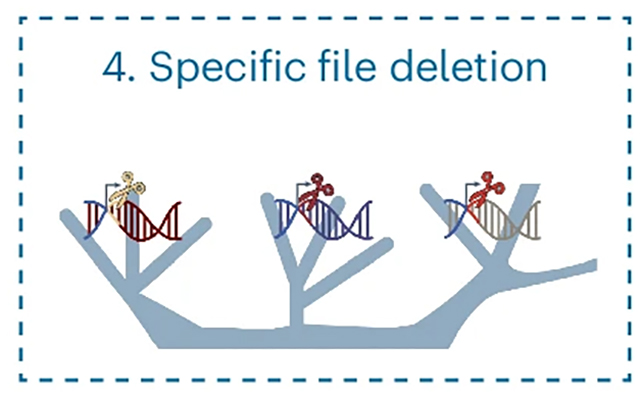For billions of years, life has used long molecules of deoxyribonucleic acid, or DNA, to store information and solve problems.
Today engineers are putting their own spin on DNA computing, to both record data and serve as biological computers, yet until now they've struggled to design a synthetic system that can store and perform tasks at the same time.
New research has now demonstrated it's possible to package and present DNA so it can manage both, providing a full suite of computing functions out of strings of nucleic acids. Specifically, we're talking about storing, reading, erasing, moving, and rewriting data, and handling these functions in programmable and repeatable ways, similar to how a conventional computer would operate.
Researchers from North Carolina State University (NC State) and Johns Hopkins University demonstrated in experiments that their novel nucleic acid scaffold serves as proof of the versatility of DNA computing, and has the potential to build incredibly compact biological machines.

"It's been thought that while DNA data storage may be useful for long-term data storage, it would be difficult or impossible to develop a DNA technology that encompassed the full range of operations found in traditional electronic devices," says NC State molecular biologist Albert Keung.
"We've demonstrated that these DNA-based technologies are viable, because we've made one."
DNA acts as a codebase for living organisms, providing molecular templates for biological structures and processes. Yet in theory, the chemical strings could represent just about any sequence of information. Scientists have been developing methods for cramming all kinds of data into free-floating strands of DNA for years.
By instead storing the molecules on tiny tree-like structures called dendricolloids, the researchers were able to not only store, but also continuously edit their code far more easily.
Key to the system is the way that the DNA information can be distinguished from the dendricolloid nanofibers it's stored on: this enables the data to be copied into RNA (ribonucleic acid) form to be processed, or specific areas of DNA to be rewritten, without damaging the original DNA 'files' or the storage medium.
Even better, the branching dendricolloid scaffold helps preserve the DNA information as well, compared with polymers in solution. Accelerated aging analysis suggested strands stored on dendricolloids at a temperature of around 4 degrees Celsius (about 39 degrees Fahrenheit) would have a half-life of millennia. At lower temperatures, it could be millions of years.
Using a system like this, data that would fill up a thousand laptops can be reliably stored in a space the size of a pencil eraser, Keung says, allowing for the long-term storage of vast databases.
"It essentially allows us to conduct the full range of DNA data storage and computing functions," says NC State chemical engineer Kevin Lin.
While we're still a long way from these DNA computers finding widespread use, this shows that it can be done. Already, the biological machine has been able to solve simple chess and sudoku problems – hardly in the realms of supercomputers but certainly impressive for microscopic molecules.
It may not be particularly powerful or particularly fast right now, but the promise of DNA storage and computing is cramming vast amounts of information into a super-small space, on a medium that could potentially outlast whole civilizations.
"We wanted to develop something that would inspire the field of molecular computing," says Keung. "And we hope what we've done here is a step in that direction."
The research has been published in Nature Nanotechnology.
